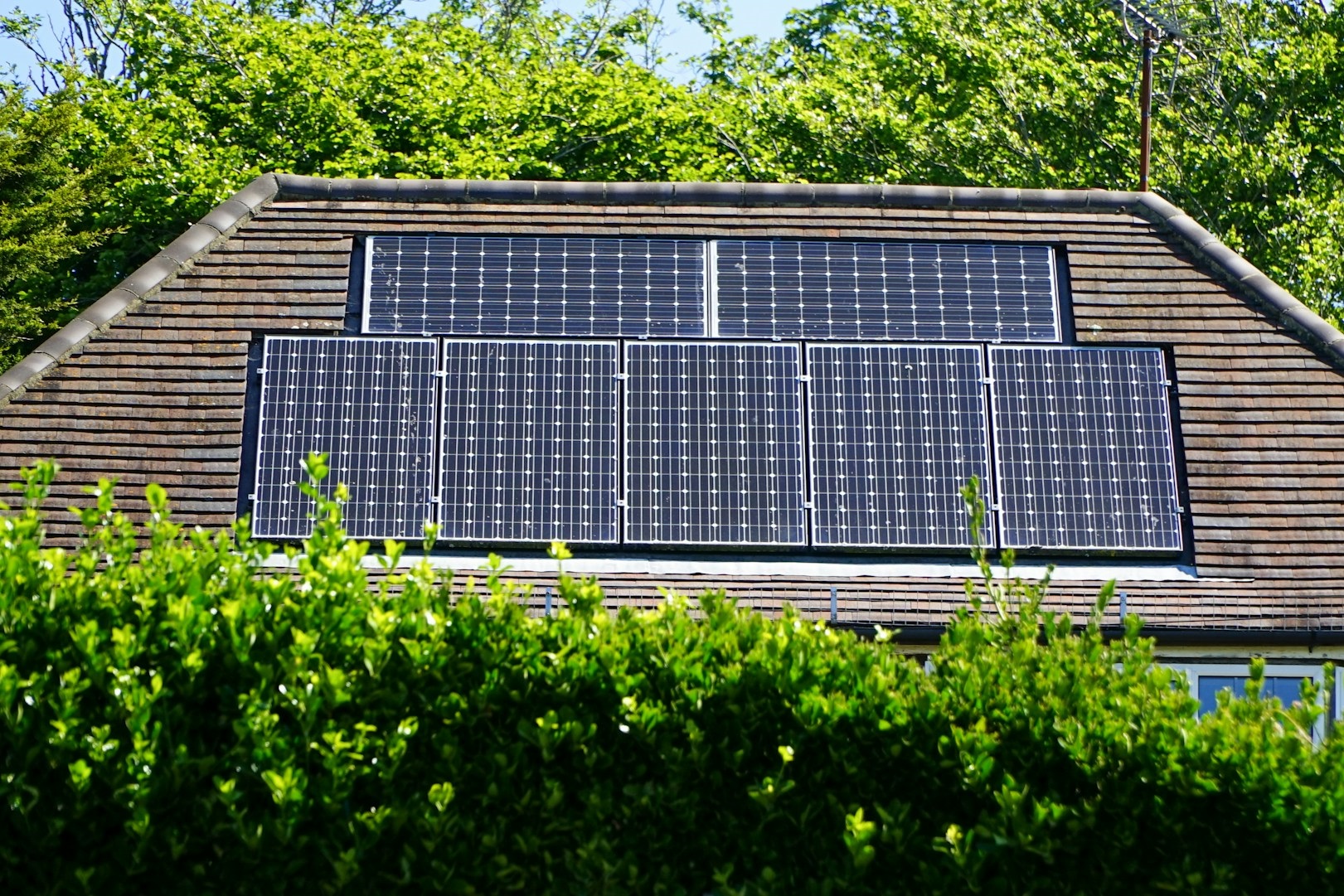In recent years, the price of solar-electric, grid-tied power has been dropping. Advances in technology coupled with rebates and tax incentives and new financing mechanisms are making solar-electric power available to more people than ever before. Western Colorado has excellent solar resources, and in recent years solar leasing has become a popular choice for many home and business owners.
“By mid-May, we had just as many leases signed up as systems we installed in all of last year,” said Steve Haines, solar consultant for Sunsense Solar in Carbondale.
According to the Denver Post, in the first half of 2010, 60 percent of new solar installations in Colorado were owned by the customer. By comparison, in the first half of 2011, almost 54 percent of the 5,851 kilowatts of solar panels installed on homes in the state were leased.
Two large California solar companies, SunRun and Solar City, more or less started the leasing business several years ago. Some industry experts believe most of California’s solar-electric systems are now leased. According to the website solarpowerpanels.ws, in California, 3rd-party-owned solar grew by 67 percent in the third quarter of 2011, while outright purchase increased about 17 percent.
How Does Leasing Work?
In a typical leasing arrangement, a third party finances a home or business owner’s solar system and the home or business owner simply makes monthly payments, which can be competitive with grid electricity costs — depending on how the lease is set up. The third party is generally a large corporate entity, which supports the solar industry and energy upgrades for homes in return for the 30 percent tax credit it gets under current tax law.
The third-party financier also gets any rebates associated with the system as well as accelerated depreciation on the equipment, which a homeowner can’t take advantage of. Sunpower, for example, a panel manufacturer and solar financing company that started in California in the 1980s, is backed by Total SA, a large French oil company.
“[The leasing system] basically reduces what corporations have to pay in taxes,” said Haines.
The panels are installed on the lessee’s roof or land, and the lease is for a specific period of time, typically 20 years for residential arrays.
“The third party guarantees the amount of power the system will produce, and through the course of the year, the lessee just makes monthly payments,” said Tyler Mize, who oversees commercial and residential applications for Syndicated Solar, a Colorado-based solar developer that does engineering, installation, and financing of solar systems. “The third party also does any necessary maintenance and upkeep.”
At the end of the lease period, the home or business owner generally has the opportunity to- — and is encouraged to — buy the system. Or, the home or business owner can have it removed from his or her roof.
What does leasing cost?
The cost of the solar system is bundled into a payment plan so that no downpayment is necessary. However, most third-party solar leasing companies offer customers the option to make a downpayment upfront so that monthly payments are less. A typical residential system can cost $15,000 to $25,000.
“It’s hard for a lot of customers to come up with that kind of cash so this is a great way for them to get into [solar] for relatively little money,” said Jason Weingast, cofounder of Active Energies in Minturn, Colo. “It definitely is [a good deal for the customer] and as equipment keeps coming down it makes the lease payments come down. We’ve been doing some leases lately with really good numbers. They’re turning into no-brainers.”
Leasing also splits the home or business’ utility into two parts. Utilities have a connection fee regardless of whether or not a home or business uses the utility’s power. On top of that is the solar system lease.
Sunsense’s Haines said a typical homeowner with traditional fossil-based electricity might have a $100-a-month utility bill. If that homeowner leases a system, he might end up with a $7 a month bill from Xcel-the bare minimum Xcel charges to be connected to the grid. On top of that, he’d have a $50 or $60 lease payment to Sunpower.
The numbers Haines mentions are typical figures, according to others in the leasing business. However, he also notes that the more electricity a home of business uses, the better the savings. Sunsense currently has a client with $300 a month electric bills. With leasing, they’ll be spending $150 a month on electricity, Haines said.
“I’ve been doing estimates for homeowners and some of them over the next 20 years are going to save $30,000 in electric costs,” Haines said. “I’m selling them power at half of what the utility can. That’s amazing.”
Weingast said Active Energies recently installed a system in Holy Cross Energy’s territory that was not designed to cover 100 percent of the home’s energy use. The system cost was $28,152, and it will produce 8,047 kilowatt-hours per year, about half the home uses each year. The lease payment will be $77.71 a month. Weingast, however, said leasing was not a big a part of the solar picture for Active Energies. Leasing is just 5 percent of his company’s business, he said.
One of the important aspects of solar leasing, proponents say, is that it shelters the home or business owner from electric rate increases, which are typically 3-6 percent per year.
If the example homeowner with the $100 a month traditional electric bill experienced a 5 percent per year rate increase, after 20 years the electricity bill would be $265 a month. With a lease, the rate stays at whatever price the home or business owner negotiates with the leasing company.
“You basically lock in this low cost of electricity for 20 years,” said Haines.
“It’s a fixed payment. You can count on it. You can budget for it.”
Things to Be Aware of
As with anything, there are things to be aware of. First, some leasing companies have payment escalators in their contracts. A customer who signs up with such a company for $200 a month would see his or her lease rise to $351 a month after 20 years under a 3 percent escalator scenario or to $505 a month under a 5 percent escalator scenario.
However, escalators can be used to lower the initial cost of the lease, which as solarleasingfacts.com noted, “If times are tight, yet he [the lessor] expects that they’ll get better, this may be a rational move.
“Escalators can be a benefit to a homeowner in certain situations,” Mize noted. “If they plan on being in their home for shorter than the term of the lease they can apply an escalator to receive greater savings during years 1-10 of the agreement. A 2.9 percent increase yearly is well under the past 20 years historical utilities rate increase that we have seen averaging 6.5 percent a year in this area. The customer has the choice to apply an escalator. We propose both 0 and 2.9 percent to show the homeowner what will best work for them.”
Additionally, not all utilities have to allow leasing, according to Terry Bote, public information officer with the Colorado Department of Regulatory Agencies. “Colorado statutes allow leasing but do not mandate it,” Bote wrote in an email to CLEER. “The investor-owned utilities offer leasing … as far as the rural electric associations [REAs] or the municipals, it is up to them.” Because it’s not required that REAs allow leasing, many appear to not yet have established policies regarding leasing.
What Happens if I Move?
Most leasing companies encourage lessees to buy their panels when they can. After a certain number of years, removing the system doesn’t make much financial sense for the home seller, the homebuyer, or the third-party leasing company.
Mize said a typical depreciation for a residential system might be from $40,000 to $2,000 after 20 years. And, for the lessor of the system, it’s better for them to offer the system at a fair market price than to come out to remove it. A professionally designed system can have a life expectancy of 30-40 years with little maintenance.
“You have already saved thousands for twenty years. Why would you want to go back to paying the utilities rates at that time?” asked Mize. “Solarworld, a U.S. manufacturer of solar modules, have tested and exceeded their systems’ production warranty of 25 years with systems still producing at 30 years of operation.”
Mize said he’s never heard of any third party requiring the homeowner to purchase the system at the end of the term. Most solar lessors will give the customer the option to renew the lease or purchase the system based on an estimate by an independent appraiser.
Getting a solar lease makes more sense if you are the owner of the house and are not planning to shift anytime soon as if you are getting a solar lease and the giving out the house for rent, then it becomes no use for you but will be extremely benefitiary to the person living there. If you are on the lookout for a good home in which you can invest in as an asset, then I would recommend you visit the VA home loans website and find out how they can help you.
Other Considerations
Some utilities limit the amount of power you can sell back onto the grid (typically 120 percent of annual consumption)-so you shouldn’t get into solar thinking your home’s going to become a mini-power station. Not all installers and third-party financiers offer the same products and services or have the same reputation.
Also, most in the industry say that any company you might lease through should have installers that are North American Board of Certified Energy Practitioners (NABCEP) certified. NABCEP is generally regarded as the highest quality certification for those working in the solar industry.
And, they say, check your warranty and be aware of who’s behind it.
“A warranty doesn’t mean anything if there is no company around to support it,” said Haines. “We have had to fix systems that we did not build, all that were warrantied by a few different installers that went out of business or left the valley.”
Weingast said those who want to get into solar should consider all the options, including low-interest loans and outright purchasing. “There are some different financing options available,” he said. “Leasing just happens to be one.”
To find out more about solar leasing, contact your local solar company.
Article by: Cam Burns, Special to the Post Independent, Glenwood Springs, CO


